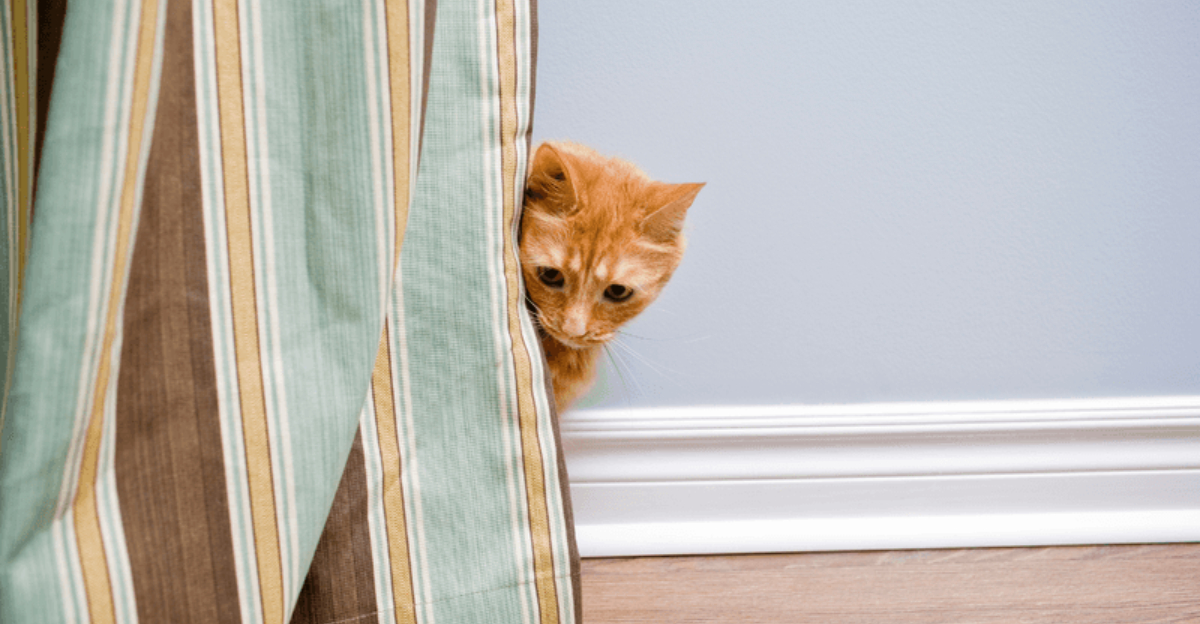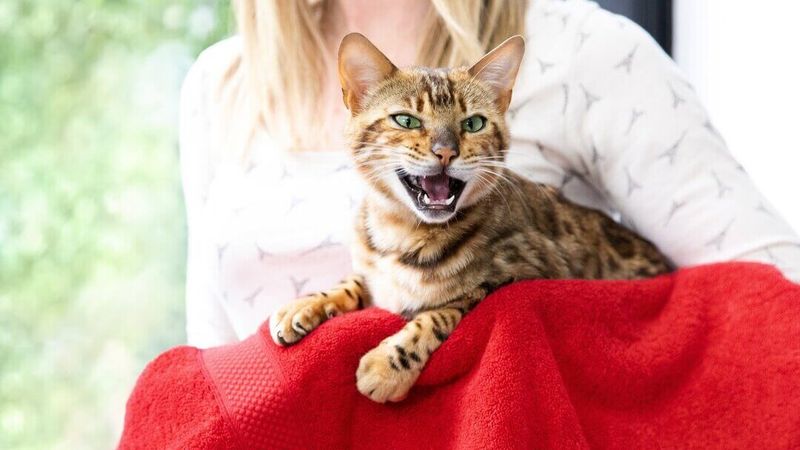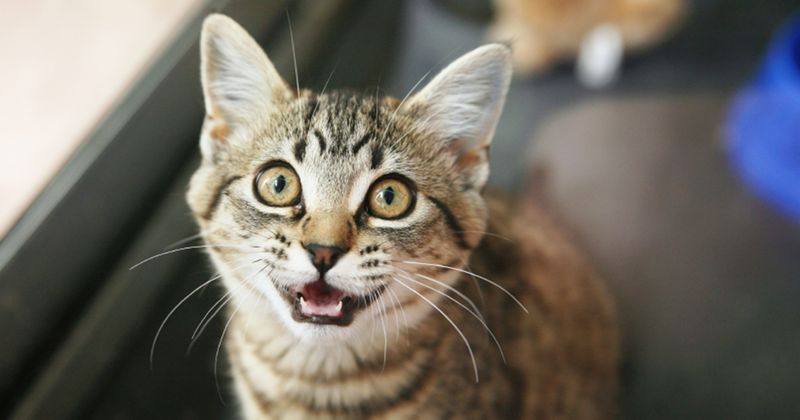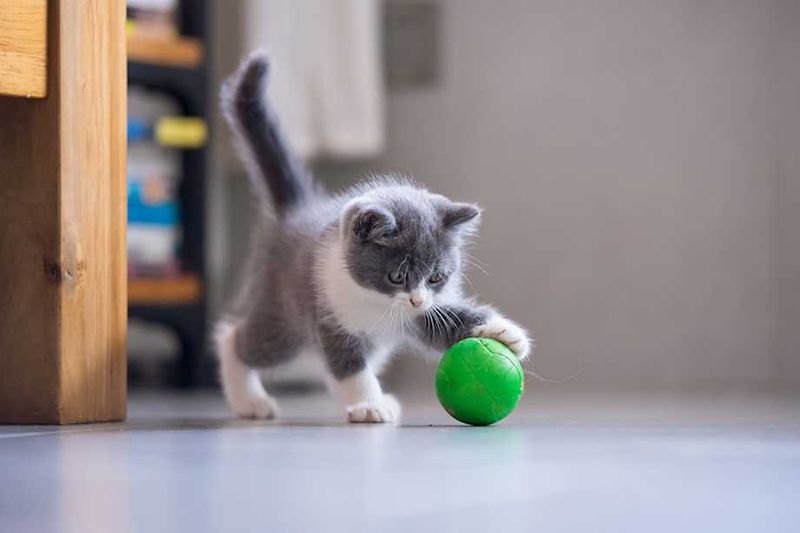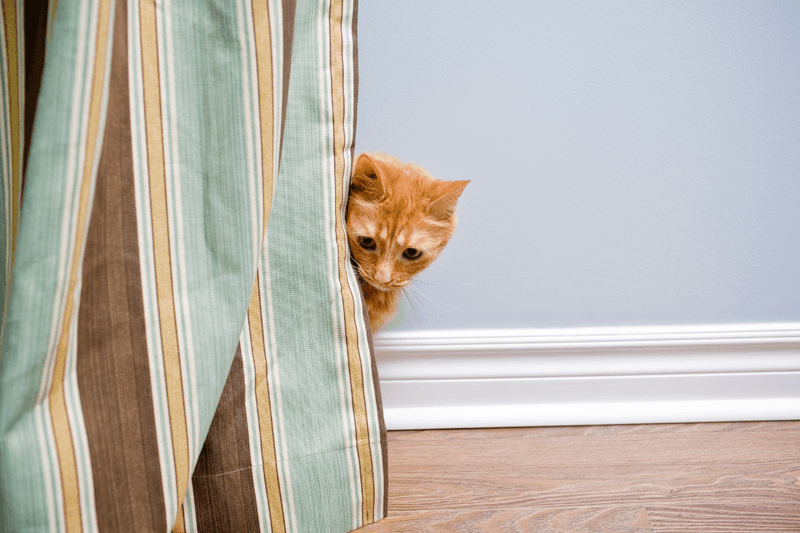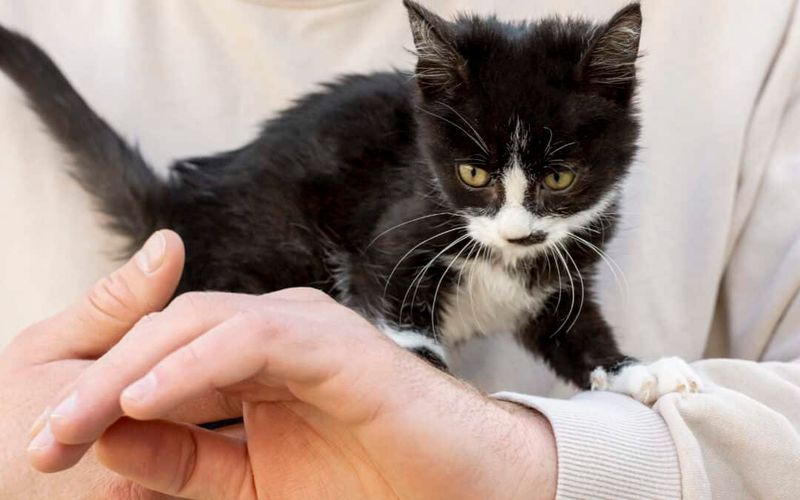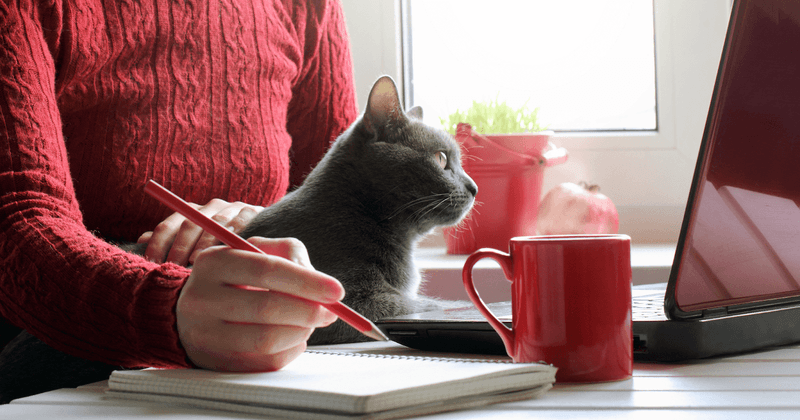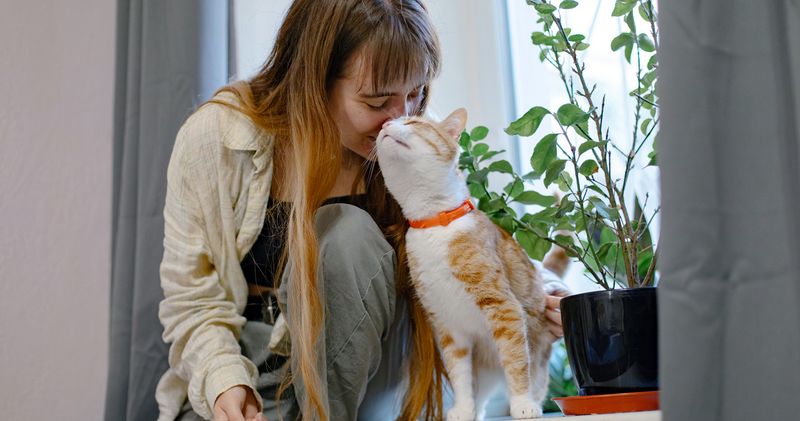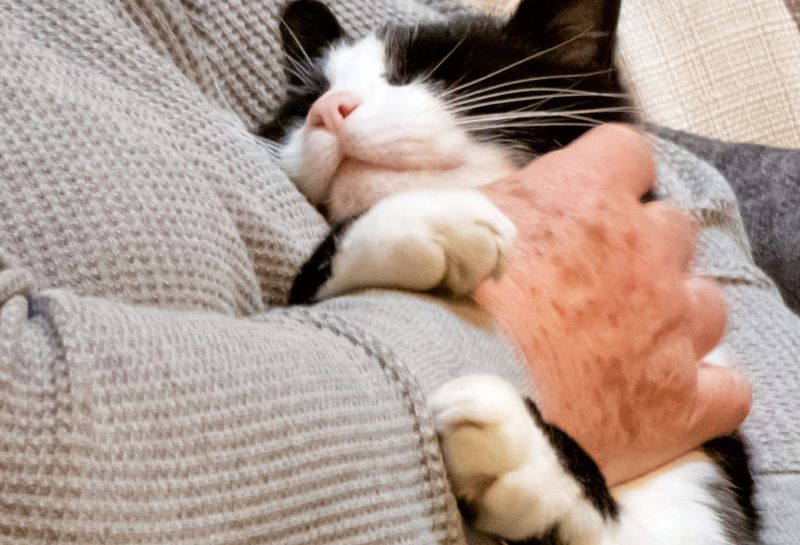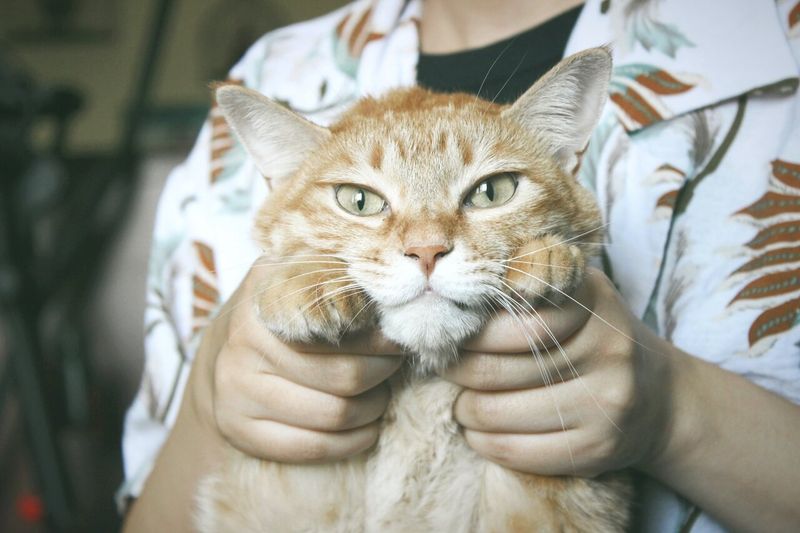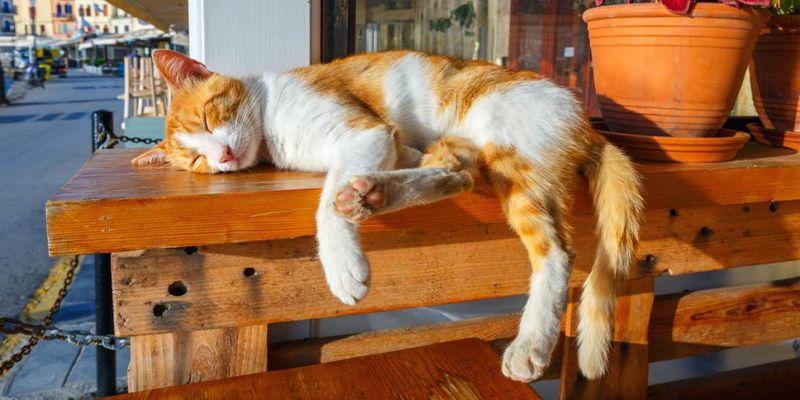📖 Table of Content:
- 1. The Secret Hideaway Seeker
- 2. The ‘Look But Don’t Touch’ Cat
- 3. The Silent Observer
- 4. The Solo Play Specialist
- 5. The Jumpy Jitterbug
- 6. The Routine Devotee
- 7. The One-Person Wonder
- 8. The Feline Shadow
- 9. The Professional Snuggler
- 10. The Chatty Catty
- 11. The Feline Welcome Committee
- 12. The Interactive Game Enthusiast
- 13. The Center Stage Lounger
- 14. The Scheduled Attention Demander
While some cats bask in solitude and quiet corners, others seem to thrive on companionship and social interaction. Observing your cat’s unique preferences can give you deep insight into their emotional world and help strengthen the bond between you.
Recognizing these traits isn’t just about labeling your cat—it’s about tuning in to what makes them feel safe, stimulated, and loved. An introverted cat might appear aloof or timid, but this simply means it recharges best alone. Meanwhile, an extroverted cat may follow you from room to room, purring and vocalizing, eager to be part of every moment.
Learning to identify the signs of feline introversion or extroversion can also guide you in creating an ideal environment—whether that means respecting their need for retreat or fulfilling their desire for attention. Below, you’ll find a breakdown of behaviors that signal where your cat might land on the social spectrum, complete with detailed explanations for each one.
1. The Secret Hideaway Seeker
When visitors arrive, your introverted kitty vanishes like a magician’s assistant. These space-loving cats retreat to quiet sanctuaries—under beds, inside closets, or behind furniture—where they can observe the world from a safe distance. This hiding behavior isn’t necessarily fear-based. Many cats simply prefer their own company and find human gatherings overwhelming. Your feline friend might emerge hours after guests leave, acting as if nothing happened. Creating dedicated hiding spots throughout your home helps these private kitties feel secure. Consider adding cat caves or clearing shelf space where they can retreat when they need a break from social interaction.
2. The ‘Look But Don’t Touch’ Cat
Some cats appreciate your presence without craving physical contact. These independent felines might perch nearby—perhaps on an adjacent couch cushion or bookshelf—maintaining a careful boundary between you and them. When you reach out for pets, they may tolerate brief contact before politely moving away. This isn’t rejection; it’s simply their preference for minimal touching. Watch for subtle body language cues like flattened ears or tail twitches that signal they’ve had enough attention. Respect for their personal space builds trust with these cats. Over time, they might gradually accept more physical affection, but always on their own terms and timeline.
3. The Silent Observer
Quiet cats communicate through subtle signals rather than constant vocalizations. While their extroverted counterparts might meow for attention, these reserved felines express themselves through gentle purrs, blinks, and tail positions. You’ll rarely hear them except when truly necessary—like an empty food bowl or locked door. Their selective communication makes those rare meows all the more meaningful. Pay close attention to their body language instead of waiting for vocal cues. Many quiet cats become slightly more talkative with their favorite person once they feel completely secure. However, they’ll never become chatty companions, preferring the power of silence over constant conversation.
4. The Solo Play Specialist
Watching an introverted cat play reveals their independent nature. These self-sufficient felines entertain themselves for hours with toy mice, crinkle balls, or even random household objects they’ve claimed as playthings. When you attempt interactive games, they might engage briefly before returning to solo activities. This preference for solitary play stems from their natural hunting instincts combined with their independent personality. They’re perfectly content batting toys under furniture and retrieving them without your assistance. Support their play style by rotating toys regularly to maintain interest. Automatic toys like motion-activated laser pointers can provide stimulation while respecting their desire for independent play sessions.
5. The Jumpy Jitterbug
Sensitive to their environment, these cats respond dramatically to unexpected sounds or movements. A dropped spoon might send them bolting across the room, while the vacuum cleaner represents a household emergency requiring immediate evacuation. Their heightened startle response isn’t just skittishness—it’s an evolutionary survival mechanism amplified by their introverted nature. Physical signs include dilated pupils, puffed tails, and flattened ears during moments of surprise. Creating predictable patterns helps these nervous kitties feel secure. Announce your presence before entering rooms, avoid sudden movements, and provide elevated spaces where they can observe potential “threats” from above. With consistent gentle handling, many jumpy cats gradually become less reactive.
6. The Routine Devotee
Schedule-loving cats thrive on predictability. They expect breakfast at 7 AM sharp, afternoon naps in specific sunny spots, and playtime at regular intervals. Any disruption to their carefully constructed day causes visible distress. Moving furniture, changing feeding times, or hosting overnight guests can trigger anxiety behaviors like excessive grooming or reduced appetite. Their attachment to routine provides security in a world they find somewhat overwhelming. Notice how they patrol the same paths through your home each day. When changes are necessary, introduce them gradually. Maintaining consistent meal times and play sessions helps these structured souls adapt to other unavoidable disruptions. Their love of routine actually makes them incredibly reliable companions.
7. The One-Person Wonder
Some cats form deep attachments to a single human while maintaining polite distance from everyone else. These selective socializers may hide when strangers visit but emerge for exclusive cuddle sessions with their chosen person. Their loyalty manifests in unique ways—sleeping only on their favorite human’s side of the bed, greeting them at the door while ignoring other household members, or saving their rare purrs for special one-on-one moments. This selective bonding reflects their need for deep connection within limited social circles. Family members shouldn’t take the apparent favoritism personally. These cats simply invest their limited social energy where they feel safest. With patience, they may gradually expand their inner circle to include other trusted individuals.
8. The Feline Shadow
Velcro cats stick to their humans like furry appendages. They trail behind you from room to room, supervising everything from cooking dinner to folding laundry with unwavering attention. Even bathroom visits aren’t private with these sociable shadows. They’ll paw under doors if excluded or perch on countertops to maintain visual contact. Their following behavior stems from genuine social interest rather than insecurity—they simply find human activities fascinating. These devoted companions make excellent work-from-home assistants, offering keyboard “help” and document “organization” throughout your day. While their constant presence might occasionally feel overwhelming, their sincere interest in your activities creates an endearing bond that many cat owners deeply treasure.
9. The Professional Snuggler
Affection-seeking cats initiate physical contact at every opportunity. They transform any nearby lap into a napping spot and convert casual petting into extended massage sessions through persistent head-butts and nuzzles. Their touch-seeking behavior includes classic moves like kneading your lap, rubbing against your legs, or draping themselves across your keyboard during work hours. Some even develop signature moves—perhaps climbing to your shoulders or touching your face with gentle paws. These natural-born cuddlers view physical connection as essential communication. Their constant contact serves as a bonding mechanism that strengthens your relationship. While their affection might seem overwhelming at times, these cats provide unmatched companionship for people who appreciate tactile connection.
10. The Chatty Catty
Conversational cats have something to say about everything. Their extensive vocal repertoire ranges from gentle trills greeting you in the morning to demanding yowls when dinner runs late. These talkative felines respond when you speak to them, creating back-and-forth “conversations” that feel surprisingly meaningful. Some even adjust their vocalizations for different requests—a specific meow for food versus another for play. Certain breeds like Siamese and Bengals are particularly known for their chatty tendencies. Living with a vocal cat means accepting their commentary on your daily activities. However, sudden increases in meowing can indicate health issues, so monitor changes in their typical conversation patterns. Most owners of chatty cats find their expressive nature endearing rather than annoying.
11. The Feline Welcome Committee
Social butterflies rush to greet visitors instead of hiding. These confident cats investigate newcomers with curious sniffs and friendly head-bumps, often surprising guests who expect typical feline aloofness. Unlike their shy counterparts, these gregarious felines view strangers as potential new friends. They’ll boldly climb into unfamiliar laps and inspect shopping bags with enthusiastic interest. Their social confidence typically develops early—kittens who receive positive exposure to various people often grow into these outgoing adults. While their friendliness delights most visitors, watch for signs of overwhelm during busy gatherings. Even social cats need occasional breaks from attention. These natural entertainers make excellent therapy cats, bringing joy to nursing homes and hospitals with their accepting nature.
12. The Interactive Game Enthusiast
Playful extroverts thrive on games that involve their humans. These energetic cats fetch toy mice, chase wand toys with athletic leaps, and may even learn tricks like high-fives or fist bumps for treats. Their play style is distinctly cooperative—they bring toys to initiate games and become visibly excited when you reach for their favorite wand toy. Some even develop elaborate routines, like racing you to the bedroom each night or ambushing you from behind furniture. These playful personalities need regular interactive sessions to prevent boredom behaviors. Their intelligence and social nature make them excellent candidates for clicker training and puzzle toys. While sometimes exhausting, their playful enthusiasm creates wonderful bonding opportunities and provides entertainment for both cat and human.
13. The Center Stage Lounger
Confident cats choose the most visible resting spots in your home. Rather than tucking themselves into hidden corners, these social loungers sprawl across coffee tables, stretch out in hallway centers, or claim the prime spot on your living room couch. Their preference for high-traffic areas reflects their desire to remain part of household activities even while resting. You’ll notice they often position themselves where they can monitor multiple rooms simultaneously. Some particularly bold cats even claim the dinner table or kitchen counter as their personal stage. These visibility-seeking behaviors indicate security and social interest. While you might trip over them occasionally, their presence in common areas creates opportunities for spontaneous interaction that strengthens your bond throughout the day.
14. The Scheduled Attention Demander
Time-conscious cats develop remarkably accurate internal clocks. They appear precisely when feeding time approaches, pawing at your bedroom door at consistent wake-up times, and initiating evening play sessions with clockwork reliability. Unlike introverted routine-lovers who quietly follow schedules, these vocal timekeepers actively remind you of missed appointments. Forget dinner time and you’ll face increasingly dramatic reminders—from gentle nudges to full-volume complaints. Their punctuality extends beyond meals to cuddle times, play sessions, and even your return from work. These schedule-keepers actually help maintain household routines. Many owners find their persistent reminders helpful, if occasionally inconvenient (especially on weekends when sleeping in is desired). Their predictable patterns create a comforting rhythm that defines daily life with these structured extroverts.
